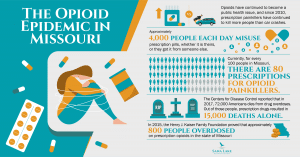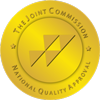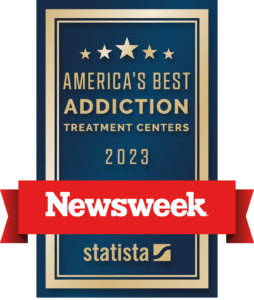According to The Missouri Department of Health & Senior Services, approximately 134 people in the United States die every day from an overdose as a result of prescription painkillers known as opioids. That is about one person every ten minutes! Let those numbers sink in. The number of opioids prescribed has dramatically increased and has continued to be on the rise, becoming an epidemic, not only in the United States alone but worldwide.
Since 1999, the Centers for Disease Control (CDC) reports that the sales of prescription opioids and the number of opioids occurring, as a result, have quadrupled. This is why the addiction specialists at Sana Lake Recovery Center in Dittmer, MO, have made it their mission to encourage people to learn as much as possible about how to better protect themselves and their loved ones from opioid use and addiction.
The Resurgence of Opioids
Since the early 1990s, a prescription medication for chronic pain and post-surgery and injury relief has been the center of the treatment protocol within the medical industry. These prescription painkillers are known as opiates.
The abuse of opioids became an epidemic around 1991 when pharmaceutical companies began to promote the drug for patients with non-cancer related pain, disregarding the risks and beneficial information, despite there being a lack of research and data. The power of these drugs was well documented. By 1999, 86 percent of patients with access to opioids were using them.
The places where opioids were easily accessible, such as the state of Missouri, were the first states to experience this increase in opioid use and abuse, whether they were prescribed or not. This resurgence of opioid use demonstrated that there was an increase in the number of deaths involving these prescription medications.
However, these deaths were said to be influenced by people being treated for chronic pain, and not the fact that pharmacies were allowing opioids to be sold and prescribed to people willy-nilly because they claimed that these medications did not have strong addictive tendencies, and the risk of addiction was very low. Well, as we know, the medical community was wrong back then, because today, opioids are extremely addictive, and the opioid epidemic is still in full effect.
What Are Opioids?
Opioids are made up of natural or synthetic chemicals that interact with opioid receptors on the nerve cells in the body and the brain to reduce feelings of pain. These drugs are in the class of prescription painkillers, such as oxycodone (OxyContin®) hydrocodone (Vicodin®), codeine, morphine, in addition to the illegal street drug known as heroin.
Opioids are mainly prescribed to treat acute and chronic pain. They are given to people popularly after recovery from surgery or an injury. While many people rely on these prescription painkillers to help manage their conditions under the care of a physician, individuals tend to underestimate their highly addictive nature.
Due to the high success rate of relieving pain, opioids are known to produce high levels of euphoria in the reward system of the brain. Therefore, people tend to want to take them more and more, and before you know it, they become dependent on them. Research shows, that using opioids for more than a month can make you dependent on them. After dependency comes tolerance, which means the body becomes used the drug being in one’s system. As a result, individuals continue to use despite the consequences.
We all know someone who has struggled with drug and substance abuse or has heard countless stories, and it is a hard pill to swallow. Drug use is a serious topic that affects the lives of many involved. Pain pills being taken to once help relieve chronic pain has now turned into a dangerous widespread epidemic. Here are some facts about opioids to put things into perspective:
- Opioids have continued to become a public health issue, and since 2010, prescription painkillers have continued to kill more people than car crashes.
- Today, the opioid epidemic causes more deaths than those with HIV did at its peak in 1995.
- Research shows, that approximately 4,000 people each day misuse prescription pills, whether it is theirs, or they got it from someone else.
- Emergency rooms in the United States treat people for not properly using prescription opioids as directed by a licensed physician.
Opioid Use Disorder (OUD): The Hard Truth About Prescription Drugs
Opioid Use Disorders are on the rise, as the Centers for Disease Control reported that in 2017, 72,000 Americans died from drug overdoses. Out of those people, prescription drugs resulted in 15,000 deaths alone.
Both genetic and environmental factors play into opioid disorders, especially with the ease of their access, which ups the risk even more. This access to prescription opioids has contributed to the current opioid epidemic.

Similar to other substance use disorders (SUD), an opioid use disorder has its unique characteristics. As mentioned before, opioids can lead to dependency within a very short time, specifically in as little as four to eight weeks. This is what leads to addiction, and can be severely dangerous.
Those who use these potent medications regularly, stopping use results in severe withdrawal symptoms, such as intense cravings, pain, muscle weakness, chills, cramps, diarrhea, nausea, anxiety, insomnia, vomiting, etc. Since these withdrawal symptoms are severe it can create a significant motivation to continue using opioids to prevent withdrawal.
In other words, when someone takes an opioid, the reward center of the brain receives high levels of reinforcement, and feelings of euphoria due to the amount of dopamine being released. With serious potential consequences, including relapse, overdose, and death, addiction to opioids requires professional help and treatment to recover.
Drug Abuse in Missouri
Drug abuse affects people of every age, ethnicity, and socioeconomic level, so it is important to understand how to identify drug abuse and help people struggling with addiction. The statistics relating to drug abuse in the state of Missouri are startling. Since 1999, overdose deaths in the United States, have quadrupled, according to the CDC.
In fact, in a study looking at drug use and addiction, The Show-Me State is ranked as one of the highest places with extreme drug use, third to be exact. Missouri has seen more drug arrests than any other place in the country. In other words, drug abuse in Missouri has been on the rise, as well as, the number of people seeking treatment.
History of the Missouri Opioid Epidemic
Oftentimes, Americans think about major drug issues affecting other states and countries but never do we ever think that the real problem lies in our place of residence. Truth is drug addiction, specifically the opioid crisis is occurring in your very own backyard, and not metaphorically, but in reality.
As mentioned before, overdose and deaths due to opioid use continue to, unfortunately, be on the rise. To put things into perspective, the state of Missouri is still in the midst of an opioid epidemic, where the number of incidences has increased by 137 percent in the past decade. Take a look at the following statistics:
- Currently, for every 100 people in Missouri, there are 80 prescriptions for opioid painkillers.
- A study conducted by the Centers for Disease Control (CDC) shows that in July 2017, the rural areas of Missouri were hit the hardest by this opioid epidemic, particularly the northern parts and southeast corner of the state by Springfield, MO. Experts say rural areas were so affected because these areas tend to have older populations of people, more physically demanding jobs, and don’t have as many treatment options for pain relief, such as physical therapy (PT).
- In 2015, the Henry J. Kaiser Family Foundation proved that approximately over 38,000 people overdosed on prescription drugs (opioids) in the United States. Nearly 800 of those occurred in the state of Missouri.
Confronting the Missouri Opioid Crisis
To address this crisis, 49 other states except Missouri have implemented a prescription drug monitoring program (PDMP), which helps to identify people who obtain excess prescriptions for addictive painkillers such as opioids, in addition to identifying physicians who overprescribe them.
In other words, a PDMP plays a vital role in fighting the opioid crisis. These programs help identify suspicious patterns of opioid overprescribing and combat prescription drug abuse by collecting significant data from pharmacies dispensing these controlled substance prescriptions such as opioids and making it only accessible for authorized users via a secure, electronic database.
After repeatedly refusing to set up a system to combat this opioid epidemic, Missouri is no longer the only state without a PDMP. In 2017, St. Louis County finally joined the other states, and finally voted yes to implementing a prescription drug monitoring program to help lower the rates of death and overdose due to opioid use.
Today, doctors and pharmacists have access to a database to check a patient’s prescription history. This program covers 80 percent of Missouri’s population, however, some counties still do not participate in the efforts to combat the state’s drug abuse problem.
Not only does this program check a patient’s prescription history, but it will also flag suspicious patterns of overprescribing, and tries to prevent doctor-shopping, which means visiting multiple doctors, as a means to get access to various prescriptions of these pain killers, for use or illegal selling.
The PDMP aims to deny patients if any suspicious behavior is detected, which can ultimately help to save a life. It is important to note, that a program like this is not a form of treatment, and rehab facility for opioid addiction is the ideal solution for recovery and long-term sobriety.
Treatment for Opioid Addiction
While the opioid epidemic, especially in Missouri, is just starting to get the recognition it needs from the health community, it is important to know, that there is hope. Treatment and rehab facilities are available in locations throughout Missouri, including Sana Lake Recovery Center in Dittmer, MO.
The treatment of opioid addiction is serious and does require professional help. Trying to self-detox from these prescription medications is not only dangerous but will result in severe withdrawal symptoms, and even death.
Our addiction specialists will perform an assessment, detox, and afterward, tailor a specific treatment plan consisting of therapies and other services to treat our patient’s individual needs. Everyone is different, and therefore, treatment methods will vary. Finding the right treatment facility for your needs may be just as difficult as asking for help, but know that there is hope.
Opioid Addiction Signs and Prevention
Besides helping our patient’s on the road to recovery and long-term sobriety, we most importantly, strive to provide a combination of high-quality resources, such as prevention tips, education, enforcement, and treatment, which will effectively help to raise awareness about the risks and signs of opioid misuse. This will play a critical role in not only helping people to recover but also empowering one to make safer choices, and in return, prevent the chance of relapse, and deaths due to overdose.
So, when it comes to the opioid epidemic, we can all have a positive impact. The following steps can help you fight your addiction:
- Realize the signs: If you or a person you know is exhibiting weird signs or behavior, and is looking for a way to consistently get more prescription medication, this may be a sign of opioid use disorder (OUD). Asking for help is not easy, but, to effectively recover from opioid addiction and withdrawal, no one can do it on their own.
- Talk to your doctor: Yes, while your doctor is the one prescribing these painkillers, they can be your biggest ally, even if you’re trying to quit a drug he or she prescribed. While doctors are sometimes the root of the problem, they are also there to help you and save your life.
- Rely on support: They say support is the most important factor in a person’s recovery outcome being successful. During treatment, group therapy and other tools and resourced are given to help support you during recovery and after. Support from therapists in addition to your friends and family will give you the motivation to not give up and see it all the way through.
There is Hope at Sana Lake Recovery Center
At Sana Lake Recovery Center in Dittmer, Missouri, our addiction specialists are trained to help those with drug addictions, specifically to opiates. We know that asking for help is extremely difficult.
Therefore, we pride ourselves in providing the best resources and high-quality continuum of care processes to ensure our patients know that there is hope for them and that they are in good hands during and after recovery. While it starts with you, we will be here every step of the way.
References
- https://www.mshp.dps.missouri.gov/MSHPWeb/Publications/Brochures/documents/SHP-538MoOpiodEpidemic.pdf
- https://dnr.mo.gov/opioids
- https://www.psychiatry.org/patients-families/addiction/opioid-use-disorder/opioid-use-disorder
- https://familydoctor.org/condition/opioid-addiction/
- https://www.poison.org/articles/opioid-epidemic-history-and-prescribing-patterns-182
https://www.springfieldmo.gov/3551/Prescription-Drug-Monitoring-Program(Link no longer available)- https://www.stltoday.com/lifestyles/health-med-fit/missouri-has-two-systems-to-monitor-opioid-prescriptions-but-it/article_a3a25301-789f-5d7d-8c2f-c3e43ac2b809.html
https://www.yourdrugtesting.com/the-drug-crisis-in-missouri/(Link no longer available)https://www.kmov.com/news/study-missouri-ranks-high-in-drug-use/article_bdbc8d54-75a2-11e9-93be-73d0b5d07c30.html(Link no longer available)



